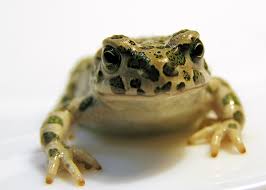
Abstract: A 12-year-old female child reported the complaint of white discoloured spots started over the nape of the neck, right-sided leg, face and genital organ. After analysing the case individualised homoeopathic medicine, Sepia officinalis, was prescribed which leads to improvement of symptoms. Homoeopathic treatment has shown favourable results in this case and demonstrates the scope of homoeopathy in such cases.
Key words: Vitiligo, individualised homoeopathic treatment, melanocytes, RADAR (version 10.0.08)
Abbreviations: O.D- once daily, OPD- outpatient department, SV- segmental vitiligo, NSV- non- segmental vitiligo.
Introduction: Vitiligo is a chronic, acquired, idiopathic depigmentary disorder characterised by milky white macules and patches due to progressive loss of specific epidermal melanocytes from the skin, hair, mucosa1. Many studies have assessed the prevalence of vitiligo in children is 0- 2.6% worldwide2. Childhood vitiligo may be associated with leucotrichia due to the involvement of the melanocytic reservoir that exists in the hair follicles2. Koebners’ phenomenon (development of vitiligo at specific trauma prone sites like cut, burn, or abrasion) is also a common clinical manifestation2. Vitiligo may be associated with some autoimmune disorders like thyroid abnormalities, rheumatoid arthritis, psoriasis, alopecia areata, pernicious anaemia, adult-onset type 1 diabetes, and addison’s disease2. Among these thyroid abnormalities are the most common association2. Childhood vitiligo is defined as disease onset before the age of 12 years and is quite common (32-40% of vitiligo patients)3. Twenty-five percent of vitiligo patients develop the disease before the age of 10 years4. Almost half of the patients with vitiligo develop the disease before the age of 20 and nearly 70–80% before the age of 30 years4. The exact cause of vitiligo is still unknown or under debate but there are different theories to explain its pathogenesis. The pathogenesis includes genetic, autoimmune responses, oxidative stress, generation of inflammatory mediators and melanocyte detachment mechanisms4. In 2011, an international consensus classified vitiligo based on distribution SV vitiligo, NSV vitiligo and Mixed vitiligo in which SV and NSV coexist in one patient. NSV includes the acrofacial, mucosal, generalised, universal, mixed and rare variants4. Vitiligo is known to be a multi-factorial disorder5.
In modern medicines, a variety of treatment options exists like topical medication such as corticosteroid, phototherapy, oral medications, epidermal transplant, and surgery6. The complementary and alternative medicine (CAM) therapies herbal medicine and ayurvedic medicine showed effectiveness and safety with minimum or no adverse reaction in the treatment of vitiligo7.
Case presentation: A 12-year-old female child reported with a complain of white discoloured spot that started over the nape of the neck, right leg and face and genital organs in the outpatient department (OPD) of the National Institute of Homoeopathy on 10th January 2019. The patient’s father first noticed a hypopigmented spot 2 to 3 years back which was gradually increasing in size day by day. Applied several allopathic ointments but no improvement could be observed. No significant information regarding family history.
Physical generals: The patient had a desire for sweet and sour, aversion for bread, meat and intolerance for milk. Her tongue was dry and clean in anterior portion. Her urine odour was offensive. Dreams of quarrelling seen. Empty feeling before eating and not ameliorated by eating.
Mental generals: Aversion to company.
Diagnosis: International Classification of Diseases code- ICD-10; L80.generalised vitiligo2.
Table 1: Analysis and evaluation of symptoms
| Characteristic mental general symptoms: Aversion to company Characteristic physical general symptoms: Desire – sweet, sour.Aversion- bread, meatIntolerance for milk.Dreams of quarrelling. | Characteristic particular symptoms: Empty feeling in stomach, not ameliorated by eating.Urine – offensive.White discoloured spot started over nape of the neck, right leg, face and genital organs. |
Table 2: Miasmatic analysis10,11
| Aversion for company | Sycotic |
| Desire for sweet | Psora |
| Desire for sour | Psora |
| Intolerance for milk | Sycotic |
| Aversion for bread | Psora |
| Aversion for meat | Sycotic |
| Dreams of quarrelling | Sycotic |
| Empty feeling in stomach, not ameliorated by eating | Psora |
| Urine – offensive | Syphilitic |
| White discolouration of skin | Psora |
CONVERSION OF SYMPTOMS INTO RUBRICS: Reference from Repertory of the Homoeopathic Materia medica by J.T. Kent using RADAR (version 10.0.08)
Table 3: Repertorial totality8
| Symptoms | Chapter | Rubrics |
| Aversion to company | Mind | COMPANY, aversion to |
| Intolerance to milk | Generalities | FOOD, milk agg. |
| Desire for sweets | Stomach | DESIRES, sweets |
| Desire for sour | Stomach | DESIRES, sour, acids |
| Aversion to bread | Stomach | AVERSION, bread |
| Aversion to meat | Stomach | AVERSION, meat |
| Empty feeling in stomach not ameliorated by taking food | Stomach | EMPTINESS, weak feeling, faintness, goneness, hungry feeling, eating not relieved |
| Dreams of quarrel | Sleep | DREAMS, quarrels |
| Offensive urine | Urine | ODOR, offensive |
| White discolouration of skin | Skin | DISCOLORATION, White spots |

Figure 1: Showing repertorisation chart
Justification of remedy: After taking a detailed case history and repertorisation, Sepia officinalis in LM potency was given as homoeopathic individualised simillimum. After repertorisation and knowledge of materia medica, Sepia officinalis, Calcarea carbonica, Kalium carbonicum were the most similimum remedies. The reason behind selection of Sepia officinalis was that, the patient was very tense regarding her disease condition. Sadness start after development of vitiligo12. She was lean, thin, narrow pelvis12. Kalium carbonicum and Calcarea carbonicum both patients are obese12. Dreams of quarrel present only in Sepia officinalis 8. Sensation of emptiness feels in stomach is a characteristics symptom of Sepia officinalis 12. Aversion for company present in this patient but in kali carb never wants to left alone12. So, Sepia officinalis was selected. Overall improvement is noticed.
Prescription: Follow up was analysed based on Kent’s twelve observations.Sepia officinalis 0/1/16 doses/O.D×16 days followed by Sepia officinalis 0/2/16 doses/O.D×16days was prescribed on first visit 10th January 2019 considering that the medicine is covering maximum reportorial totality, miasmatic background and physical general and mental general symptoms of the patient.
Table 4: Follow up
| DATE | OBSERVATION | PRESCRIPTION |
| 15/02/2019 | Visible white discolouration slightly reduced. No significant improvement of depigmentation over the face area. | Sepia officinalis 0/3/16 days O.D×16 days 2. Sepia officinalis 0/4/16 days O.D×16 days |
| 19/03/2019 | Few dark spots appeared in right leg and nape of the neck, genital organ. No significant improvement of depigmentation over the face area. | Sepia officinalis 0/5/16 days O.D×16 days 2. Sepia officinalis 0/6/16 days O.D×16 days |
| 25/04/2019 | Number of dark spots apparently increased in right legs and nape of neck, genital organs. No significant improvement of depigmentation over the face area. | Sepia officinalis 0/7/16 days O.D×16 days 2. Sepia officinalis 0/8/16 days O.D×16 days |
| 27/05/2019 | Number of dark spots apparently increased compared to the last visit in right leg and nape of the neck, genital organ. | Sepia officinalis 0/9/16 days O.D×16 days 2. Sepia officinalis 0/10 days O.D×16 days |
| 30/06/2019 | Clear improvement with visible dark spots in right leg and nape of the neck, genital organ. Intensity of depigmentation is reduced in face. | Sepia officinalis 0/11/16 days O.D×16 days 2. Sepia officinalis 0/12/ 16 days O.D×16 days |
| 29/07/2019 | Significant improvement with measurable pigmentation in right leg and nape of the neck, genital organ. Observable reduction in depigmentation intensity of the face area compared to the last visit | Sepia officinalis 0/13 days O.D×16 days 2. Sepia officinalis 0/14 days O.D×16 days |
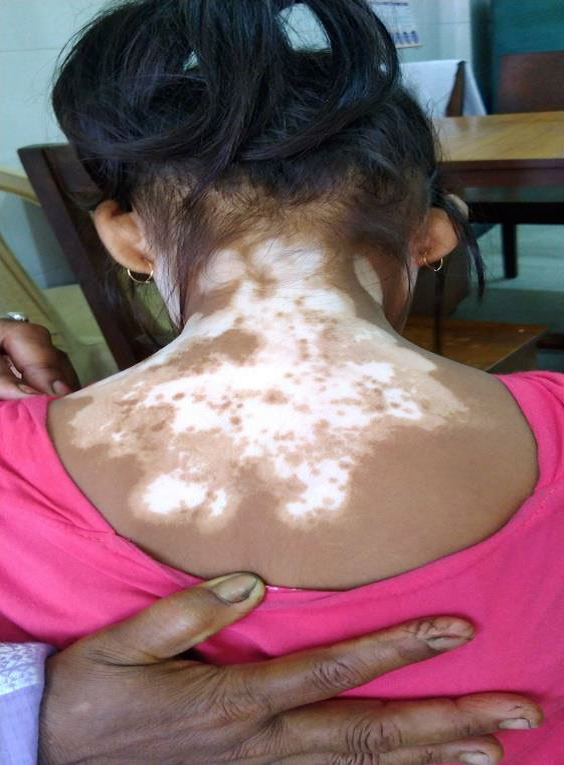
| Before treatment |
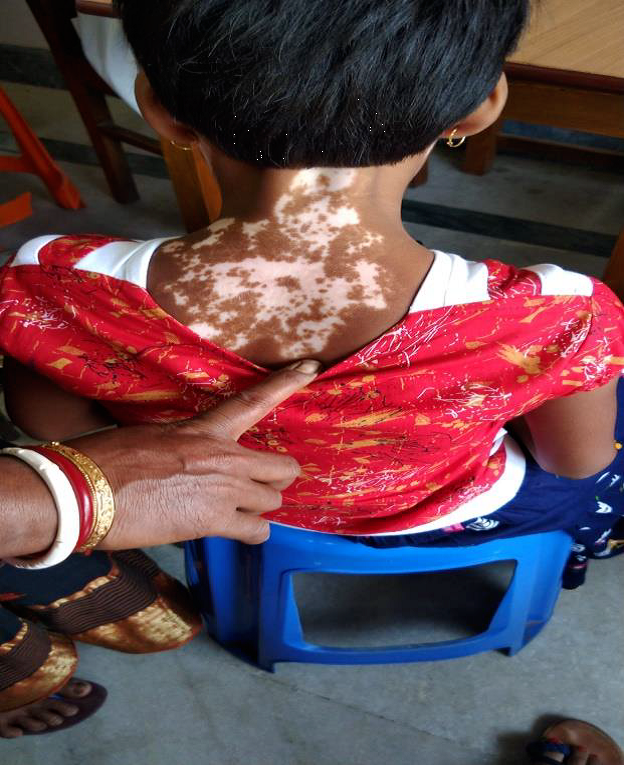
| After treatment |
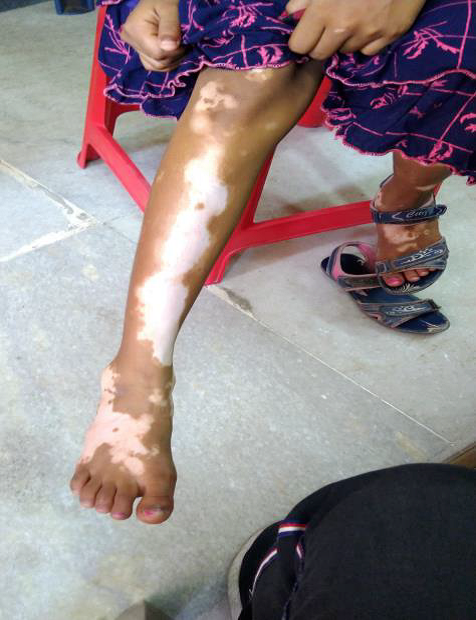
| Before treatment |
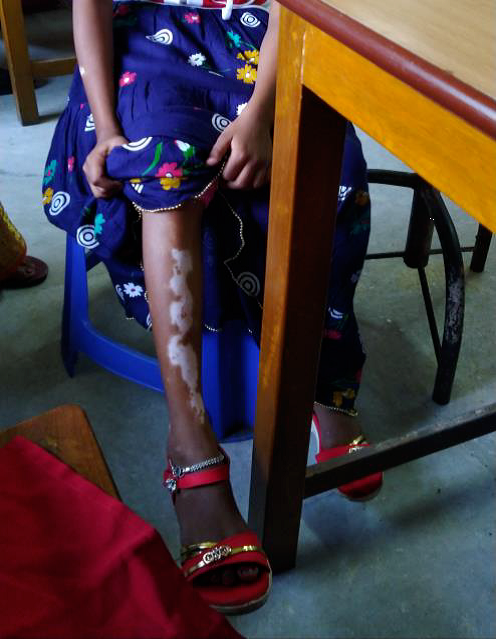
| After treatment |
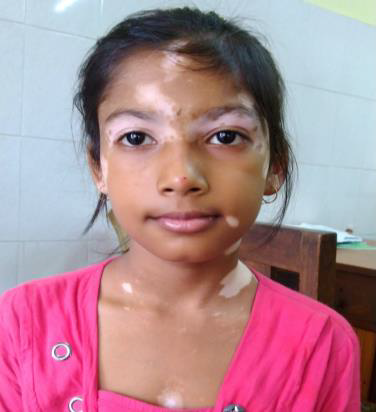
| Before treatment |
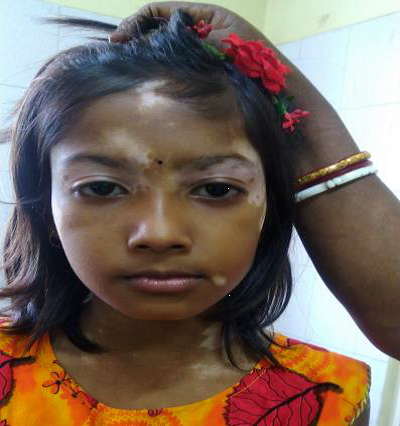
| After treatment |
Discussion: The remedy Sepia officinalis has significant role on white discolored patches. Sepia officinalis was given to the patient in LM potency due to symptom severity. Visible white pigmentation slightly improved within first month, followed by overall improvement within 7 months. It is seen that LM potency has significant role in case of chronic disease as well as vitiligo.
Conclusion: Overall the case suggests the usefulness of homoeopathic medicines in the management vitiligo. However, further research like RCT in multi-centric design is required on larger sample size before making firm recommendations.
REFERENCES
- Ezzedine K and Silverberg N. A Practical Approach to the Diagnosis and Treatment of Vitiligo in Children. Pediatrics. 2016, July; 138(1):e20154126. doi: 10.1542/peds.2015-4126
- Nicolaidou E, Mastraftsi S, TzanetakouV,Rigopoulos D. Childhood Vitiligo. American Journal of Clinical Dermatology 20, 2019, March; 515–526. https://doi.org/10.1007/s40257-019-00430-0
- Palit A, Inamadar AC. Childhood vitiligo. Indian J Dermatol VenereolLeprol 2012; 78 (1):30-41. doi:10.4103/0378-6323.90944
- Bergqvist C, Ezzedine K. Vitiligo: A Review. Dermatology. 2020, March; 236(6):571-592. doi:10.1159/00050610
- Samidha, Joshi, M. Renuka, Talele Gitanjali and S. Rajesh. EVALUATION OF MELANOGENIC AND ANTI-VITILIGO ACTIVITIES OF HOMEOPATHIC PREPARATIONS ON MURINE B 16 F 10 MELANOMA CELLS. ejpmr, 2017, June, 4(7), 718-723.
- Sheth PK, Sacchidanand S, Asha G S. Clinicoepidemiological profile of childhood vitiligo. Indian J Paediatr Dermatol 2015; 16(1):23-8. doi:10.4103/2319-7250.149425
- Chen YJ, Chen YY, Wu CY, Chi CC. Oral Chinese herbal medicine in combination with phototherapy for vitiigo: a systemic review and meta-analysis of randomized control trials. Complementary Therapies in Medicines. 2016 Jun 1; 26:21-7. DOI: 10.1016/j.ctim.2016.02.009
- kent JT. Repertory of Homoeopahic Materia Medica. Enriched Indian Edition. Reprinted from 6th American edition. New Delhi: B Jain Publishers (P) Ltd; 2000
- RADAR (Computer programme). Version10.0.08 Belgium: Archibel, 2007
- Hahnemann Dr. Samual, The Chronic Diseases, Their Peculiar Nature and Their Homoeopathic Cure; B Jain Publication (P) Ltd., 1 Reprint Edition :1998; Book Code: B -2266
- Roberts HA, The Principles and Art of Cure By Homoeopathy ; B Jain Publishers Pvt. Ltd., New Delhi , 1990
- Boericke W. Pocket Manuel of Homoeopathic Materia Medica and Repertory. 12th Impression. New Delhi; B Jain Publishers (P) Ltd., 2013
- Kent J., Lectures on Homoeopathic philosophy 15th edition. New Delhi : B Jain Publishers 2015
About the author
Dr Mousumi Das
PGT, Dept. of Pediatrics
NIH, Kolkata- 106




